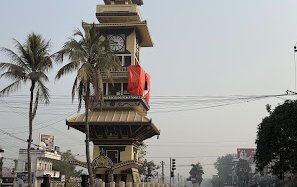In the field of development, the term 'sustainability' has become a widely used buzzword, especially when evaluating the impact and success of development projects. As global challenges intensify, sustainability has emerged as an essential criterion for assessing the long-term effectiveness of these projects. But how well do these projects in Nepal truly meet the standards of sustainability? This article explores the concept of sustainability in development projects, critically examining its implementation, evaluation, and the factors influencing its success in Nepal.
The Evolution of Sustainability in Development Projects
Sustainability in development projects typically refers to the ability of a project to continue delivering benefits long after the initial funding phase is completed. This involves maintaining project outcomes and ensuring they contribute positively to the local community, environment, and economy over the long term. While the concept of sustainability is not new, it has gained increasing importance over the last few decades as both donors and implementing agencies aim to ensure their interventions have lasting impacts.
Development agencies, governments, and organizations frequently create projects with specific objectives in mind, such as reducing inequalities, enhancing disaster-prone areas' resilience, building climate change adaptation capacity, improving WASH services, or fostering economic growth. While achieving short-term goals is crucial during the project cycle, ensuring the long-term sustainability of these outcomes becomes vital once external funding phases end. In Nepal, the sustainability of development projects depends on various complex factors that influence the country's socio-political and economic environment.
Key Aspects of Sustainability in Development Projects
When assessing the sustainability of development projects, multiple dimensions are typically taken into account: technical, financial, political, environmental, institutional, and social. These dimensions are closely interconnected, and overlooking any one of them can jeopardize the overall sustainability of a project.
- Technical Sustainability
Technical sustainability refers to the extent to which the infrastructure or systems established by a project can be maintained and operated without continuous external intervention. In Nepal, where infrastructure development is crucial, technical sustainability can be a challenge. For example, many water supply systems installed with the help of foreign aid face problems of maintenance and repair due to a lack of technical expertise and resources in local communities. Projects that fail to train local stakeholders or provide the necessary technical support often see their gains erode shortly after completion. Exceptional schemes like the Dhulikhel drinking water supply system, Harthok Lift Drinking Water Supply system, and board model drinking water system demonstrate that with a manageable, well-structured approach, inclusive decision-making, and transparent management, remarkable achievements can be realized.
A case in point is the irrigation projects in Nepal, such as the Bhairawa-Lumbini Groundwater Irrigation Project, Banganga Irrigation System of Kapilvastu, Battar lift irrigation of Nuwakot, Narayani lift irrigation system, and many other agency-farmer managed model projects that have brought systems. However, the lack of skilled local technicians has led to issues of non-functioning systems within a few years because the technologies used are beyond the farmers' reach. When external support phases out, the sustainability of these systems becomes questionable. On the other hand, Farmers Managed Irrigation Systems (FMIS) like SauraMauja irrigation of Rupandehi, Rajapur Irrigation of Bardiya, Raj kulo of Palpa, and many others are found to be effectively operating systems.
1 Financial Sustainability
Financial sustainability is a crucial factor in ensuring the long-term success of projects beyond their initial funding period. In Nepal, development projects rely heavily on international aid, making it challenging for them to sustain operations once the funding ends. This can lead to difficulties in maintaining the progress achieved during the project phase, as local resources or government support may not be sufficient.
For example, community forestry programs in Nepal have improved forest conservation and provided income for local communities. However, without ongoing external support, these programs may struggle to sustain their financial management and activities.
The country's reliance on foreign aid further complicates the issue of financial sustainability. While international donors establish financial models for projects, they often do not adequately address the long-term funding needs, placing the responsibility on local governments or communities.
2 Political Sustainability
Political sustainability in Nepal is the ability of a project to persist despite the ever-changing political landscape. The country's frequent political instability and government restructuring can lead to fluctuations in political commitment to long-term projects. When a new government takes office, there may be a shift in priorities, resulting in the abandonment of previously successful initiatives.
For instance, education and health programs funded by foreign aid have encountered difficulties in maintaining continuity due to changing political agendas. Government policy changes can divert attention from long-term projects to more immediate political concerns, impeding the effectiveness of development efforts.
Moreover, the intricate political dynamics in Nepal, where local, regional, and national interests often clash, can make it challenging for development projects to align with all stakeholders' interests. This can undermine the political sustainability of projects and create obstacles to their long-term success.3
3 Environmental Sustainability
Environmental sustainability is a crucial consideration in all development initiatives, particularly in countries like Nepal that are confronted with various environmental issues such as deforestation, soil erosion, and the effects of climate change. Ensuring that a project is environmentally sustainable means that the benefits it delivers do not result in negative environmental outcomes.
In Nepal, projects focusing on agriculture, irrigation, and forestry often struggle to strike a balance between development objectives and environmental sustainability. For instance, some irrigation schemes, while providing immediate advantages to farmers, could deplete local water resources in the long run if not managed effectively. Similarly, large-scale infrastructure projects like roads and dams can have significant environmental repercussions if sustainable practices are not integrated into their planning.
The impacts of climate change further jeopardize the sustainability of development projects in Nepal, particularly those related to agriculture and water resource management. For instance, shifts in precipitation patterns and rising temperatures may diminish the efficiency of irrigation systems or disrupt crop cycles, posing challenges to the sustainability of projects designed based on historical climate conditions.
4 Institutional Sustainability
In Nepal, institutional sustainability is crucial for the long-term success of development projects. Local institutions, including government bodies, NGOs, and community organizations, must have the capacity to effectively manage and maintain project outcomes. However, many local institutions in Nepal
lack the necessary technical and managerial skills to ensure sustainability. Challenges such as limited funding, insufficient trained staff, and political interference further hinder their ability to sustain development interventions.
For instance, local water management committees may struggle to secure resources and expertise to maintain water supply systems, while educational institutions may find it difficult to sustain quality education programs without external funding.
5 Social Sustainability
Social sustainability is considered the most crucial aspect of development projects as it has a direct impact on the long-term social outcomes. In Nepal, factors like community involvement, gender equality, and social inclusion are key determinants of the success of a project.
The integration of local communities into the project cycle is vital for social sustainability. Projects that empower communities, promote inclusivity, and address social inequalities are more likely to achieve lasting impact. However, challenges exist in ensuring social sustainability in Nepal, especially in marginalized or remote areas where social norms and power dynamics can hinder participation.
Gender disparities have been a significant issue in many rural development projects in Nepal, limiting the opportunities for women and marginalized groups to benefit from project outcomes. This lack of inclusivity undermines the social sustainability of these initiatives.
6 The Challenge of Sustainability in a Dynamically Changing World
One of the major obstacles to achieving sustainability in development projects in Nepal is the rapidly changing socio-political and environmental landscape. The country's development path is influenced by various factors such as political instability, economic limitations, and evolving global priorities. In such a volatile setting, determining sustainability thresholds and dimensions becomes a challenging task.
Global frameworks like the Sustainable Development Goals (SDGs) play a crucial role in shaping national development strategies and influencing the design of development projects. However, aligning projects with these goals requires a thorough evaluation of local contexts, available resources, and long-term plans. In Nepal, where issues like poverty, inequality, and environmental degradation persist, ensuring that development projects contribute meaningfully to the SDGs is a significant challenge.
Furthermore, the dependence on foreign aid and external funding cycles often leads to development projects being planned with a limited timeframe in mind. Once the funding ends, many projects struggle to sustain their progress without the necessary financial and technical resources. This reliance on aid undermines the true essence of sustainability, as projects often rely on external assistance to maintain their impact rather than building local capacity to continue independently.
Conclusion
The importance of sustainability in assessing the effectiveness of development projects cannot be overstated, yet achieving it remains a complex and challenging task. In Nepal, a multitude of factors such as technical, financial, political, environmental, institutional, and social aspects interact to create a difficult landscape for ensuring the long-term sustainability of development initiatives. While some projects manage to sustain their impact beyond the initial aid period, many others fall short of meeting sustainability standards due to a mix of internal and external influences.
To promote sustainable development in Nepal, it is imperative for development organizations, local authorities, and communities to embrace a comprehensive approach that transcends mere compliance with predetermined benchmarks and takes into account the broader socio-political and environmental context. By fostering local ownership, enhancing institutional capacity, and addressing the interconnected elements that shape sustainability, Nepal can work towards achieving enduring development outcomes. In a rapidly changing world, sustainability should be viewed as a fluid and evolving process that demands ongoing adaptation, cooperation, and dedication across all segments of society.
- National Anticipatory Action Framework And Roadmap In Nepal: A Long-Awaited Leap In Nepal’s Disaster Risk Management
- Apr 15, 2025
- Localization: A Path To Socio-Economic Transformation In The Globalized World
- Mar 24, 2025
- Political Dimensions Of Localization In Humanitarian Discourse: Humanitarian Actions At Local By Regional Agencies
- Feb 11, 2025
- Saga of the Justice Reality: Work from Home with Remote Allowance
- Dec 05, 2024
- Climate Justice: A Global Call For Gender Equity In The Age Of Climate Change
- Nov 10, 2024
















